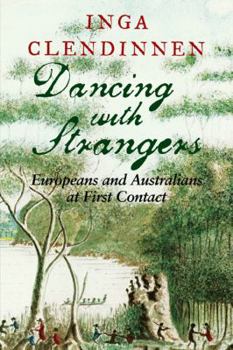Dancing with Strangers: Europeans and Australians at First Contact
Select Format
Select Condition 
Book Overview
In January 1788, the First Fleet arrived in New South Wales, Australia and a thousand British men and women encountered the people who would be their new neighbors. Dancing with Strangers tells the story of what happened between the first British settlers of Australia and these Aborigines. Inga Clendinnen interprets the earliest written sources, and the reports, letters and journals of the first British settlers in Australia. She reconstructs the difficult path to friendship and conciliation pursued by Arthur Phillip and the local leader 'Bennelong' (Baneelon) that was ultimately destroyed by the assertion of profound cultural differences. A Prize-winning archaeologist, anthropologist and historian of ancient Mexican cultures, Inga Clendinnen has spent most of her teaching career at La Trobe University in Bundoora, Australia. Ambivalent Conquests: Maya and Spaniard in Yucatan (Cambridge, 1989) and Aztecs: An Interpretation (Cambridge, 1995) are two of her best-known scholarly works; Tiger's Eye: A Memoir, (Scribner, 2001) describes her battle against liver cancer. Reading the Holocaust (Cambridge, 2002) explores World War II genocide from various perspectives.
Format:Paperback
Language:English
ISBN:0521616816
ISBN13:9780521616812
Release Date:June 2005
Publisher:Cambridge University Press
Length:346 Pages
Weight:1.06 lbs.
Dimensions:0.9" x 5.9" x 9.0"
Customer Reviews
4 ratings
Purchase of Dancing with Strangers
Published by Thriftbooks.com User , 16 years ago
The book arrived much more quickly than I had anticipated and is in excellent condition. Many thanks.
`People always look most alike when we know them least'
Published by Thriftbooks.com User , 17 years ago
This is a thoughtful, insightful look at the initial contacts between Australia's indigenous people and members of the First Fleet in 1788. There is an intense curiosity, both within this book and in the snippets of evidence from the primary documents Ms Clendinnen refers to, about the meanings of the human interactions observed. Reading through the snippets from Watkin Tench, David Collins, William Bradley and others offers insights into the impacts of foreign cultures on each other. `Our first shared Australian story is a tragedy of animated imagination, determined friendship and painfully dying hopes.' One of the tragedies is in the way we view history. Written records, with their framework of events and theories of causation speak for themselves in ways that oral traditions, especially by those dispossessed, often cannot. At the end of her book, Ms Clendinnen writes: `Here in this place, I think, we are all Australians now.' I am not sure that we are there yet, but there is renewed hope that we can be. This book is well worth reading for its insights into those initial contacts. Jennifer Cameron-Smith
Excellent history !
Published by Thriftbooks.com User , 18 years ago
Inga Clendinnen, one of Australia's most influential historians has written a gripping account of the relationship between the members of the First Fleet and the local "Australians" (as Clendinnen calls the aborigines). She uses the old reports and journals of the crew as source material. The result is a surprising peek at what really went on in those first 5 years, how Governor Arthur Phillip worked to establish friendly contacts, the clash of cultures so different from each other, and what happened to his efforts. Clendinnon is not as academic as she has been with prior works, but neither is this a beach read. It's a serious history book of real merit which also happens to be very well written.
A Glimpse of How Things Might Have Been
Published by Thriftbooks.com User , 20 years ago
Inga Clendinnen's new book traces the history of contact between Aboriginal Australians and British colonisers from 1788-1800. Clendinnen has used a number of primary sources for her book, mainly journals kept by the British. By comparing different versions of the same events, she has - as far as is possible - excavated the facts of what actually happened from the subjective accounts they are embedded in. She has then applied the available anthropological knowledge about the Indigenous people of Sydney to interpret events and relationships through their Aboriginal cultural context. We meet a fascinating group of people, both British and Aboriginal, and learn about how they coped with their newfound situations, and how they forged relationships with each other. Most of all, we find a story of two very different cultures profoundly misunderstanding each other. However, we also find a fair and compassionate man in Australia's first Governor, Arthur Phillip. In the years from 1788-1792, his leadership was committed to treating the Aboriginal locals well, interacting with them as equals, and attempting to understand them. As Phillip leaves the colony and subsequent Governors are less committed to these ideals, we sense an opportunity lost, and glimpse a different set of possibilities for Australia. This is a beautifully written account of a period in Australia's history which reminds us that things could have turned out very differently for Aboriginal people.






